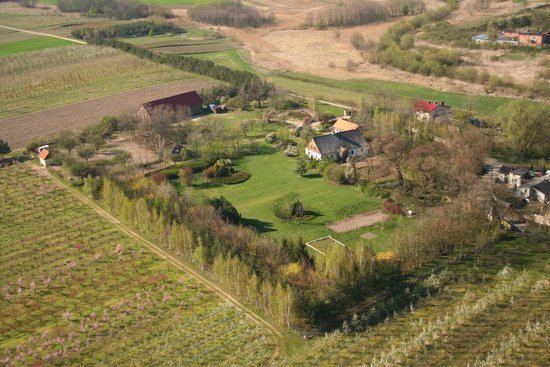Country Poland Gmina Pyzdry Postal code 62-310 Area 12.16 km² Local time Sunday 11:29 PM | Elevation 90 m (300 ft) Population 3,188 (2006) | |
 | ||
Weather 2°C, Wind N at 14 km/h, 95% Humidity Voivodeship | ||
Pyzdry [ˈpɨzdrɨ] (German: Peisern) is a town in Września County, Greater Poland Voivodeship, Poland, with 3,163 inhabitants (2004).
Contents
Map of Pyzdry, Poland
History
Pyzdry was first mentioned in 1232, when army of Silesian Piast Duke Henry I the Bearded entered Greater Poland. Pyzdry is one of the oldest town of the province, as in 1257 it was mentioned as a location governed by a vogt, which means that a well-established urban center must have already existed here. It is not known when Pyzdry received Magdeburg rights; most likely it happened during the reign of Duke Bolesław the Pious.
On June 29, 1318 Wladyslaw Lokietek called at Pyzdry a meeting of Polish nobility and bishops, during which it was agreed that a delegation be sent to Pope John XXII, asking for his permission to grant Polish Crown to Lokietek. In 1331, Pyzdry was burned to the ground by the Teutonic Knights in the Battle of Pyzdry. Following the destruction, King Kazimierz Wielki ordered construction of a defensive wall with a mighty castle. In 1345, a truce between Kazimierz Wielki and John of Bohemia was signed here.
On June 6, 1346, Kazimierz Wielki presented at Pyzdry legal statutes for the province of Greater Poland. In 1390, King Wladyslaw Jagiello met here with Wartislaw VII, Duke of Pomerania, who pledged vassalage to king of Poland. In 1562, Pyzdry was named as the location of gatherings of pospolite ruszenie for Kalisz Voivodeship. The town was in 1655 captured and looted by Swedish soldiers (see Swedish invasion of Poland), and in 1704, a battle between supporters of Stanislaw Leszczyński and August II took place here. In 1768, Pyzdry burned in a great fire.
Following the second partition of Poland, Pyzdry was annexed by the Kingdom of Prussia (1793). In 1815, it became part of Russian-controlled Congress Poland, in which it remained until World War I, and was the westernmost point of the Russian Empire. In 1818, Pyzdry County was disbanded, and in 1867, Russians reduced Pyzdry to the status of a village, which lasted until 1919.
The town has several points of interest:
Among people born here are Mikolaj of Pyzdry (rector of Jagiellonian University), writer Stefan Otwinowski and film director Ewa Petelska.
